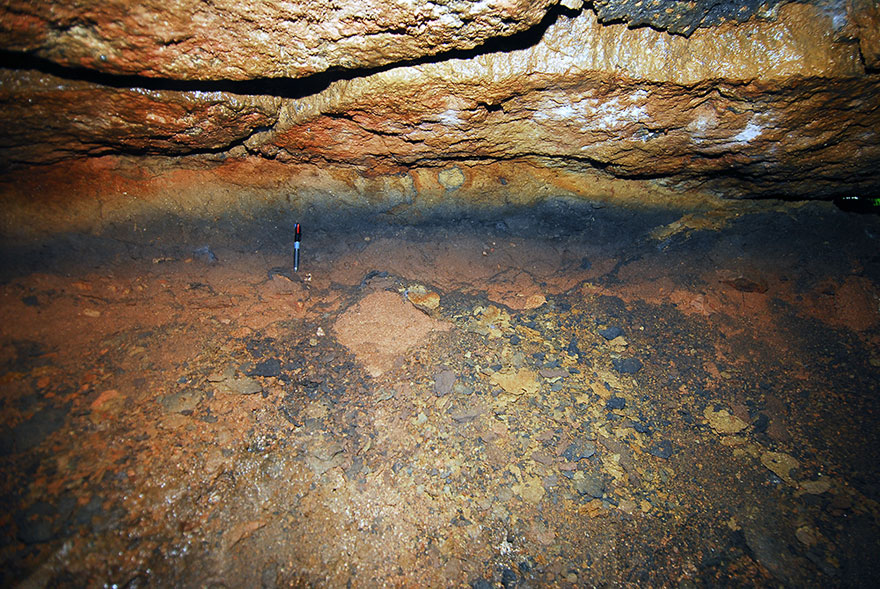Representative
Geosite
Representative
Geosite
Ongjanggul
- Cheorwon Peace Observatory
- Songdaeso
- Daegyocheon basalt canyon
- Imjin River Columnar Joint
- Dongmakgol Tuff Stone
- Gamaso Valley of Gyodong
- Chatancheon Columnar Joint
- Baegun Valley and Stratum
- Dangposeong
- Ongjanggul
- Guraigol Valley
Ongjanggul Cave is a erosion cave located about 400 meters away from the Hantan River. Ongjanggul has the formation process which is the only one existing in Korea because it is very unique among all 1)erosion caves.
Before lava flowed in, Biotite granite of the Mesozoic Jurassic period was distributed along the Hantan River. weathered soil and sediment accumulated on top of this granite due to a long period of weathering. Lava had coverd on top of this and cooled for many years, forming basalt column joints. Rainwater flowed into the column joints, bringing the weathered soil and sediment out of the cave. In addition, granite was also removed by erosion of differential erosion, creating caves that can be observed now. What's interesting is that the cave has became unique consisting a basalt ceiling and a granite floor.
The rock or rocks inside the soil was carved out by rainwater, streams, and wind. The cave is a typical limestone cave.
 Ongjanggul Survey Diagram (Korea Institute of Cave Biology, 2001)
Ongjanggul Survey Diagram (Korea Institute of Cave Biology, 2001)
Inside the Ongjanggul, the temperature is always remained between 12°C and 14°C. Many animals are observed to be living inside the cave. In particular, about 10cm of contact with basalt is black, and this is determined that 2)the organic matter in the soil has been hydrocarbonized by the heat of lava.
Substances that make up living things such as animals and plants
 the carbonated high soil layer observed inside the cave
the carbonated high soil layer observed inside the cave
Like this, Ongjanggul Cave is a very unique cave that cannot be seen in Korea. Of course, it is not easy to access since it is located in a private area now, but its value is very high, so further research must be done in the future.
Source: Ongjianggul Report (2008), Professor Gwang-Jun Lee of Sangji University